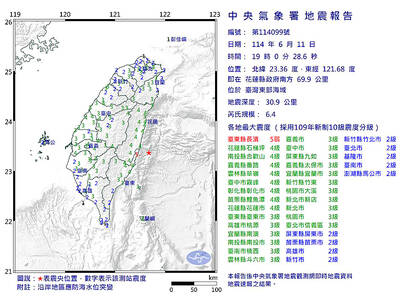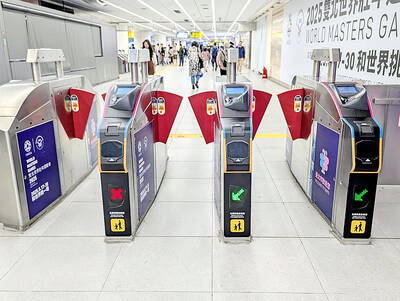Once called the “dark village,” the Smangus Tribe area in Hsinchu County has become a shining example of Taiwan’s illumination renovation, the Ministry of Economic Affairs said on Saturday.
Ahead of World Earth Day tomorrow, the Smangus demonstrated advanced illumination concepts and equipment such as LED lighting devices that are eco-friendly and conserve energy.
One of the last areas in Taiwan to be connected to electrical supplies, the Smangus village relied on standard fixtures that consumed a lot of energy and caused occasional blackouts.
The Bureau of Energy, Taiwan Power Co and the Industrial Technology Research Institute recently decided, however, to turn the remote village into a model for illumination, replacing the old devices with electricity-saving bulbs.
The heads of the tribe stressed that the renovation could improve both the stability of the electricity supply and energy conservation and said the change was in line with the philosophy of their ancestors, who lived in tune with nature.
The bureau noted that the new fixtures lowered electricity bills, and saved on the costs of building infrastructure for the neighborhood, while maintaining the original landscape by integrating the high-tech lighting with the natural environment.
Adopting similar energy-saving lighting devices around the country could potentially save between 30 percent and 80 percent of the 26 billion kilowatt-hours of electricity used for illumination annually, which represents about 12 percent of Taiwan’s total electricity consumption of 221.4 billion kilowatt-hours, the bureau said.
“The energy-saving lighting could also help reduce carbon dioxide emissions,” the bureau said.
To realize such savings, the ministry has worked to promote both the energy efficiency and standards for energy-saving products, while launching a green revolution in illumination this year, the bureau said.
These efforts include assisting local public and private organizations to replace incandescent lamps, which consume more energy, and promoting the use of energy-saving LED products.

A magnitude 6.4 earthquake struck off the coast of Hualien County in eastern Taiwan at 7pm yesterday, the Central Weather Administration (CWA) said. The epicenter of the temblor was at sea, about 69.9km south of Hualien County Hall, at a depth of 30.9km, it said. There were no immediate reports of damage resulting from the quake. The earthquake’s intensity, which gauges the actual effect of a temblor, was highest in Taitung County’s Changbin Township (長濱), where it measured 5 on Taiwan’s seven-tier intensity scale. The quake also measured an intensity of 4 in Hualien, Nantou, Chiayi, Yunlin, Changhua and Miaoli counties, as well as

Credit departments of farmers’ and fishers’ associations blocked a total of more than NT$180 million (US$6.01 million) from being lost to scams last year, National Police Agency (NPA) data showed. The Agricultural Finance Agency (AFA) said last week that staff of farmers’ and fishers’ associations’ credit departments are required to implement fraud prevention measures when they serve clients at the counter. They would ask clients about personal financial management activities whenever they suspect there might be a fraud situation, and would immediately report the incident to local authorities, which would send police officers to the site to help, it said. NPA data showed

ENERGY RESILIENCE: Although Alaska is open for investments, Taiwan is sourcing its gas from the Middle East, and the sea routes carry risks, Ho Cheng-hui said US government officials’ high-profile reception of a Taiwanese representative at the Alaska Sustainable Energy Conference indicated the emergence of an Indo-Pacific energy resilience alliance, an academic said. Presidential Office Secretary-General Pan Men-an (潘孟安) attended the conference in Alaska on Thursday last week at the invitation of the US government. Pan visited oil and gas facilities with senior US officials, including US Secretary of the Interior Doug Burgum, US Secretary of Energy Chris Wright, Alaska Governor Mike Dunleavy and US Senator Daniel Sullivan. Pan attending the conference on behalf of President William Lai (賴清德) shows a significant elevation in diplomatic representation,

The Taipei MRT is to begin accepting mobile payment services in the fall, Taipei Rapid Transit Corp said on Saturday. When the company finishes the installation of new payment units at ticketing gates in October, MRT passengers can use credit cards, Apple Pay, Google Pay and Samsung Pay, the operator said. In addition, the MRT would also provide QR payment codes — which would be compatible with Line Pay, Jkopay, iPass Money, PXPay Plus, EasyWallet, iCash Pay, Taiwan Pay and Taishin Pay — to access the railway system. Currently, passengers can access the Taipei MRT by buying a single-journey token or using EasyCard,